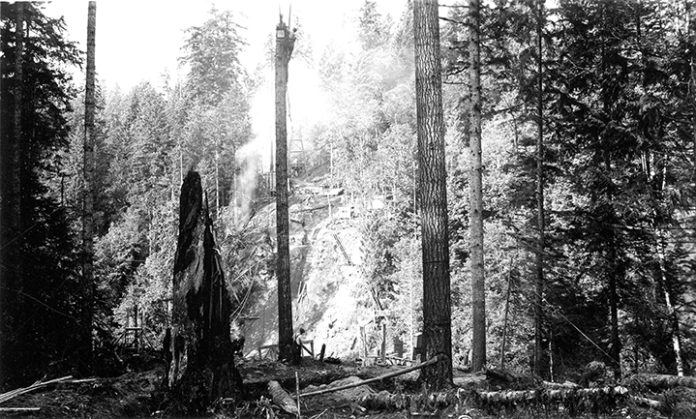Over the next six weeks, this column will feature photos from 1932-33, when the Kummer Bridge over the Green River was built. Officially known as the Dan Evans — Green River Bridge, it’s sometimes called the Highway 169 or High Bridge that connects Black Diamond and Enumclaw. The photos were taken by Thomas Blum, a licensed surveyor who also served as bridge inspector for King County from 1924-1934.
Most old-timers still call it the Kummer Bridge or Kummer Cut-off. The area got its name from the clay mining town named for George Kummer, a ceramist and engineer working for Puget Sound Fire Clay Co. which later became the Denny-Renton Clay Co. Kummer was a town of perhaps 75 persons with a school plus more than a dozen homes for the workers. In later years, coal was mined near Kummer with some production burned on site to fire the clay before further processing.
This Sept. 1, 1932 photo looking north from the Enumclaw side shows a tree-climber attaching rigging to a Douglas fir. The spar tree, as they were called was topped mimicking techniques developed for high-lead logging. The high-lead system was invented by Oscar Wirkkala, a Finnish immigrant who first worked at a Cosmopolis, Washington sawmill. Wirkkala was one of 50 original inductees into the Washington State Hall of Fame.
One of the first steps in building the Kummer Bridge was to string thick steel cables across the 700-foot span over the river. This was carried out by first sending a rope across the canyon, which was used to drag a light-weight line back, and so forth, until a sufficient sized steel cable for heavy lifting was secure. Next week’s column will illustrate a second step in building the steel-truss bridge that 90-years later still provides a direct route between Black Diamond and Enumclaw.








